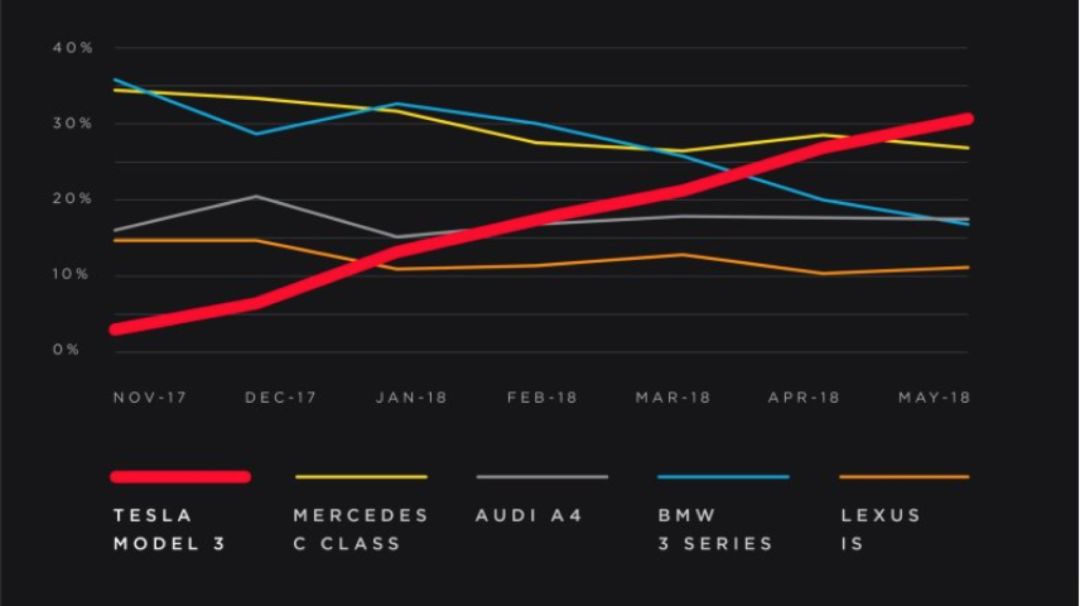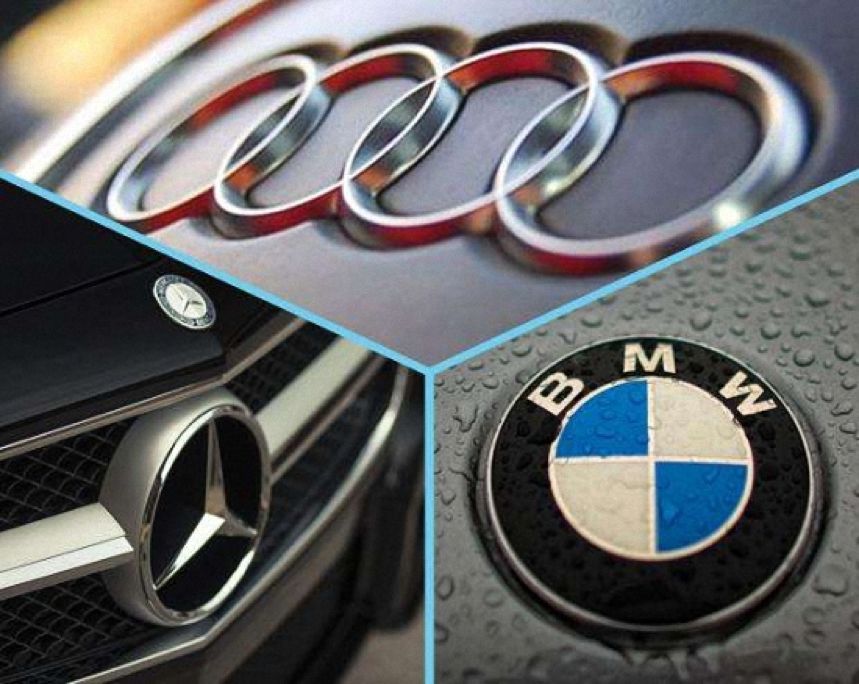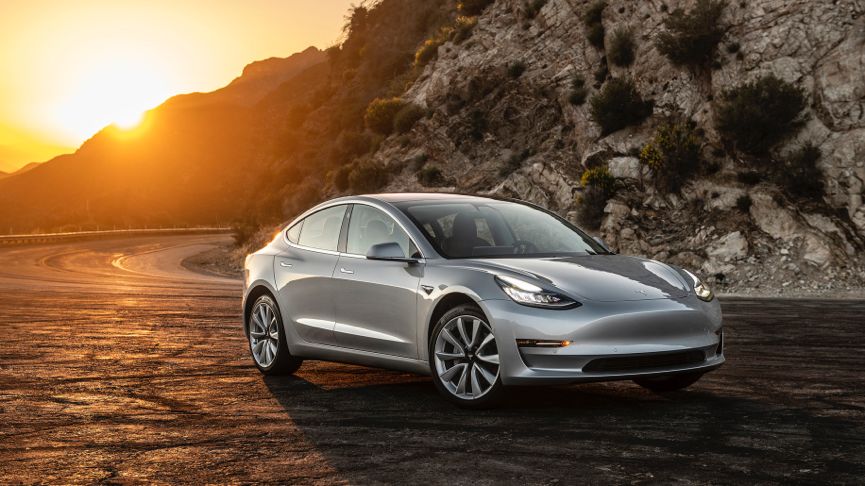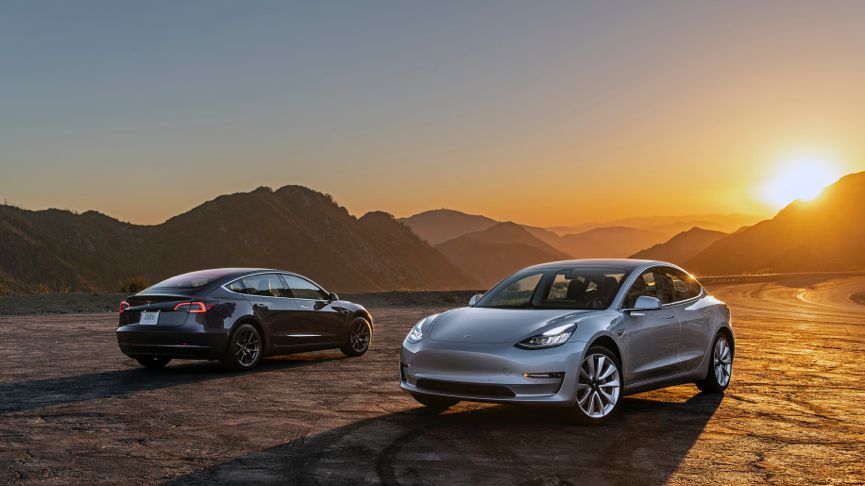In the United States, BBA car makers are starting to panic.

Mercedes-Benz C-Class, BMW 3 Series, and Audi A4 are the most direct competitors of Tesla Model 3 in terms of brand, price, and model. In the second largest automobile market in the world, the United States, they were surpassed by the less than one-year-old Model 3 since April this year.
Since I got to know about cars, BBA has been the initial recognition of luxury car brands for me. However, for electric and intelligent cars like Tesla, I had no idea about them a few years ago. Nowadays, Tesla has become a hot topic in every street and lane, and the most influential brand of electric and intelligent cars.
The reason why Tesla has attracted so much attention from the whole automobile industry is its Model 3 that won 500,000 orders after its release. For so many years, no other car could attract such high attention, and every move of Model 3 production line has been the headline of the automobile industry.
I have always been curious how many of these orders were originally for BBA cars.
In terms of model level, if Mercedes-Benz E-Class and BMW 5 Series can still compete with Model S, it seems that Mercedes-Benz C-Class and BMW 3 Series can hardly resist the trend of Model 3 currently. In the US, Model 3 has beaten the sales of 5,500 C-Class cars with its delivery volume of more than 6,000 in May. As long as the production capacity of Model 3 continues to increase, the sales gap can still be widened.


So why is Model 3 so popular? As the electric car with the most orders currently, how far can Model 3 go?
From Born Ambitious to Innate Strength
Unlike the predecessors Roadster and Model S, which were heavily criticized in the early stages, Model 3 can be said to have been born with a silver spoon, with capacity being perhaps its only weakness.The Model S and Model X have indeed paved the way for the Model 3, and if the Model S is naturally strong, then the Model 3 is undeniably powerful. It boasts high appearance, long endurance, subversive design that breaks tradition, and continuous upgrades in vehicle performance and software through OTA, making the Tesla brand deeply rooted in people’s hearts. And most importantly, it has reached a price point that is within the level of mass consumption, entering the circle of entry-level luxury cars.
After the weekly production capacity exceeded 5,000, this car looks really successful. Based on this number, the annual production capacity of Tesla’s single Model 3 will reach 260,000, which is also an acceptable figure in the traditional fuel car industry. We can compare this with domestic auto manufacturers. Last year, Beijing Benz produced 240,000 cars, Brilliance BMW produced 300,000 cars, and FAW Audi produced 340,000 cars.
Tesla has given the “naturally powerful” label to the Model 3, an entry-level luxury electric sedan that has allowed Tesla to become a “real car company” in some sense, transitioning from the electric vehicle realm to the fuel vehicle realm.
The strong sales of the Model 3 became prominent after half a year of its release. In February, it made the Top 10 Global Electric Car Sales list with 4,360 deliveries, and climbed to fourth place on the list in May. Tesla is also the only new automaker on the list, with all three of its models qualifying.
In Tesla’s home country, the Model 3 surpassed the most popular hybrid car, the Toyota Prius, earlier this year and began to seek broader competition.According to Tesla’s delivery data released on July 2, Tesla delivered 28,386 Model 3s in the first half of this year by the end of the second quarter. It can be inferred that Tesla delivered 9,780 units in June. In its home market, the Model 3 has become the leading model of entry-level luxury cars in the field of fuel-powered cars.
No wonder some media commented that once the entry-level version of Model 3 (the $35,000 short-range version) enters into mass production, the next target would be Toyota Camry. Camry is the sales champion of the mainstream midsize cars in the US, selling 150,000 units in the first 5 months of this year. And the Camry is priced $10,000 lower than the Model 3.
Of course, there are opposing voices. Even if the sales of Mercedes-Benz C-Class, BMW 5-Series, and Audi A4 all decline, these automakers have introduced new models in the same class, such as the Audi A5, Audi Q5, BMW X1, and Mercedes-Benz GLC, which attract potential car owners interested in C-Class, 5-Series, and A4.
In addition, looking at the sales performance of car manufacturers, Mercedes-Benz, BMW, and Audi performed higher than the average level in the US automotive market in the first five months of this year, with an increase of about 3%.
However, what cannot be refuted is that Model 3 is the top one in the entry-level luxury car segment.
In fact, since the launch of Model 3, traditional car manufacturers have almost collectively seen Tesla as a competitor, especially the luxury brands representative of BBA, who directly compete with Tesla in terms of price. These time-honored and proud brands could never have dreamed that one day they would have a competitor with only 10 years of car-making experience.
“The leader of this young competitor said: ‘We have just become a real car company.’ It seems that the previous 10 years were all about faith.”
420,000 orders are in progress
Tesla’s next goal is to increase the Model 3 weekly production to 6,000 by the end of next month, to complete the 420,000 pending orders as soon as possible, while increasing new orders. “We expect orders to increase faster than production capacity.”
It can be foreseen that after completing the 420,000 orders, there will be a significant impact on two other major automotive markets, Europe and China.
In Europe and China, the status of BBA’s luxury car brands is currently unshakeable.
 Mercedes-Benz sold approximately 2.28 million vehicles globally last year, with 950,000 deliveries in Europe and 580,000 sales in China. The Mercedes-Benz C-Class is the best-selling model, with the Chinese market being its largest and fastest growing. In Europe, the Mercedes-Benz E-Class is the best-selling model.
Mercedes-Benz sold approximately 2.28 million vehicles globally last year, with 950,000 deliveries in Europe and 580,000 sales in China. The Mercedes-Benz C-Class is the best-selling model, with the Chinese market being its largest and fastest growing. In Europe, the Mercedes-Benz E-Class is the best-selling model.
BMW sold about 2.46 million vehicles worldwide last year, with 1.1 million sales in Europe and 590,000 deliveries in China. The BMW 3 Series is the top-selling model, with 143,000 deliveries in the whole year.
Audi sold around 1.8 million vehicles worldwide last year, with 860,000 sold in Europe and 590,000 sold in China. The A4 model has the highest sales volume in Audi’s product line, with sales reaching 340,000 units.
BBA dominates the top three positions of luxury brands almost every year, and the competition is fiercely intense.
Starting next year, Tesla will begin delivering its Model 3 in Europe and Asia, becoming a common rival of BBA in the US, Europe and China.
Although it is uncertain how many of the 420,000 orders are from Europe and China, with the Model S already having won recognition in these two markets, there will undoubtedly be at least six-figure Model 3 orders in these two markets. In these two markets, the primary competing models, the Mercedes-Benz C-Class and the BMW 3 Series, are so popular.
Of course, tariffs will make the price of the Model 3 higher than local prices in these two markets, and in China, it may be in the price range of mid-luxury cars.
Among the 420,000 orders being completed, I am aware that a large wave of faithful car owners are waiting very faithfully for delivery.

A new revolution in industrial technology has begun
Seeing the Model 3 often reminds people of the Ford Model T.
The world’s first production line created by Ford made the Model T legendary, selling 15 million units in 19 years. The productivity once reached one car every 10 seconds and accounted for half of the US auto output. Although Ford’s stubbornness and unwillingness to make any improvements ultimately caused the Model T to fall behind the times and fade away, there is no denying that the Model T opened the breakthrough of industrial production technology change at that time, and the world entered the era of fuel vehicles.
The success of Model 3 cannot be attributed solely to its tempting starting price of $35,000, but also to its position at the crossroads of electric and fuel cars, along with a production line with a 95% automation rate and full-car OTA.As a new force in the automobile industry, Tesla has gained confidence to compete with traditional car manufacturers after the weekly production capacity of the Model 3 exceeded 5,000 vehicles, which proves the initial success of a production line with a 95% automation rate. Musk’s direction is still right.
The whole vehicle OTA has surpassed the modification method of traditional car manufacturers. For car owners, it achieves continuous updates in performance and software even after purchasing a vehicle. For Tesla, it controls a large amount of vehicle operation data, and the frequency of vehicle upgrades can be greatly improved.
All of these are signals of industrial technological change, transforming fuel cars that have developed for a century to truly intelligent electric cars.
As pioneers of intelligent electric cars, the Model S and Model X have laid a lot of groundwork for their development. As the most affordable intelligent electric car with the largest number of orders, the Model 3 has become the representative of the revolution. Like the Model T car that brought popularity to fuel cars back in the day, the Model 3 may become the real popularizer of electric and intelligent cars, ushering in the “Apple” era of the automobile industry.
For fuel cars and intelligent electric cars, the most direct experience is actually from those luxury car owners who have both Tesla and Mercedes-Benz or BMW.
As Li Xiang, CEO of Chehejia, said in his latest post on Weibo about his experience with the Model X: “Tesla’s iteration speed is very fast, several times faster than that of traditional car brands, due to the large amount of data it has obtained and the different management mode. If you have the conditions for charging and are economically affluent, buy a truly intelligent pure electric car, and you will understand my experience. This kind of experience and cognition cannot be guessed, or even criticized. Once you use it, you can never go back, which is exactly the same as the process of replacing intelligent smartphones.“


 * Elon Musk: Tesla is now a real car company
* Elon Musk: Tesla is now a real car company

This article is a translation by ChatGPT of a Chinese report from 42HOW. If you have any questions about it, please email bd@42how.com.
